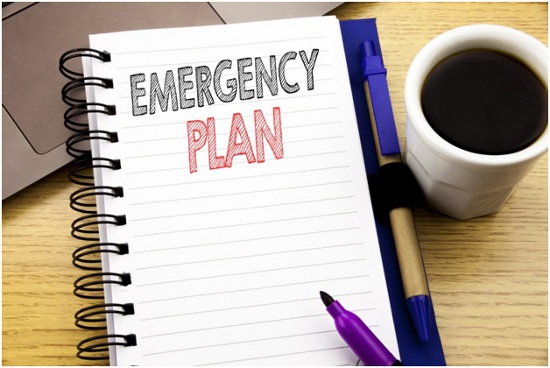Businesses are breaking down. A July 2021 survey revealed that nearly 39% of American small businesses had supply chain problems in the previous week. Supply chain problems are just one problem that businesses face on a regular basis.
This is why business contingency plans are so important. Yet very few companies know how to draft one plan, let alone execute it.
What are the various risks that your business faces? How can you maintain business continuity after a calamity? What do you need to do to keep your employees happy and focused?
Answer these questions and you can maintain your business operations through the worst disasters. Here is your quick guide.
Evaluate Risks
Start drafting your plan by considering what threats there are to your business. You should consider what would happen if your company leadership was incapacitated. This can occur after a car or plane accident.
You should also consider threats to your offices, warehouses, and clients. A natural disaster can wipe out all your operations. If you are on the coast, you should consider hurricane and flood risks.
A workplace shooting will suspend operations for a period of time, regardless of what happens. The more damage that a shooting causes, the longer you will be out of business. You should develop plans for different levels of damage.
Focus on Business Continuity
Once you have brainstormed some risks, think about ways you can keep your business afloat. Evaluate what shareholders are expecting of your company. If they expect you to change your safety operations after a disaster, you should do so.
Think about how upper managers can communicate with low-ranking employees. Sending out emails or messages on Slack may not be enough. Each manager should have a folder with the phone numbers and addresses of each employee.
You should also consider how you will communicate with your shareholders. You may not be able to send out social media messages during a blackout. You may need to visit important clients yourself or organize an event after the emergency has passed.
Think about where you can get supplies if yours become damaged. Find ways that you can store and maintain data outside of your office. You can utilize external drives and computers, including at the homes of your employees.
Rank the resources of your business in order. Your employees should come first.
But you can decide what pieces of equipment and what contacts are most important to you. After an emergency, you should move to preserve the second-most important resource.
Empower Employees
You can only develop a resilient business if you have resilient employees. You should hold seminars on a regular basis teaching employees crucial skills. At a minimum, these seminars should occur after you acquire new pieces of equipment to use.
But you should also perform team-building exercises. You can play improvisation games that encourage quick thinking and cooperation.
On a bigger scale, you should invest in your workers. Offer them competitive salaries and open up promotions to high-achieving employees.
Promote inclusion and diversity throughout your company. It is not enough to hire some Black workers. You should promote and offer full benefits to BIPOC, LGBTQIA+, and lower-income workers, including those with disabilities.
Tell workers to take care of their mental health. Offer time off and provide benefits for mental health resources, including for people with racial battle fatigue.
Touch base with an employee about your contingency plans and means of helping your workers. Visit websites like https://miller-ink.com/crisis-communications/ for information on what your plan should include.
Respond to Unforeseen Events Quickly
Follow the news for extreme weather forecasts. Touch base with your employees about what the news entails.
You must suspend business operations whenever your local or state government asks you to. You must encourage your employees to evacuate if there is an evacuation order in your area.
Do not hesitate when an order goes out. Get in touch with all of your departments and secure your buildings. Move important documents to areas inside your building where floodwaters cannot reach them.
In the event of a fire or mass shooting, evacuate the building immediately. Call 911 and tell emergency personnel where you think the emergency originated from. Once you are in a safe place, you can contact important shareholders.
Prioritize Personnel Issues
Unhappy or stressed employees will abandon you if you do not care for them. Allow employees to go home and be with their families. Anyone who has received a physical injury should get full workers’ compensation.
Anyone with PTSD, depression, or anxiety should also get full compensation. When they are ready to return to work, they should get accommodations. They may need a shift in their hours or responsibilities.
You can throw a “welcome back to work” event when your employees are ready to return. This can help boost morale and restore company unity.
But you should follow up the event by visiting each employee. You should tell them what you are doing to prevent another problem from occurring. Be honest and try to craft a good person-to-person connection with the person you are talking to.
How to Achieve Business Contingency Plans
Business contingency plans give your business a guide. You may have internal and external threats, including natural disasters. You must plan ahead for each one.
Think about what you must do to communicate with all crucial parties. Train your employees to solve problems and remain happy in spite of difficulty.
You must respond to a disaster right away. Keep your employees safe by allowing them to evacuate or bond with their family members. When they return to the office, focus on their problems.
A good business braces for the worst. Learn other business safety strategies by following our coverage.

















